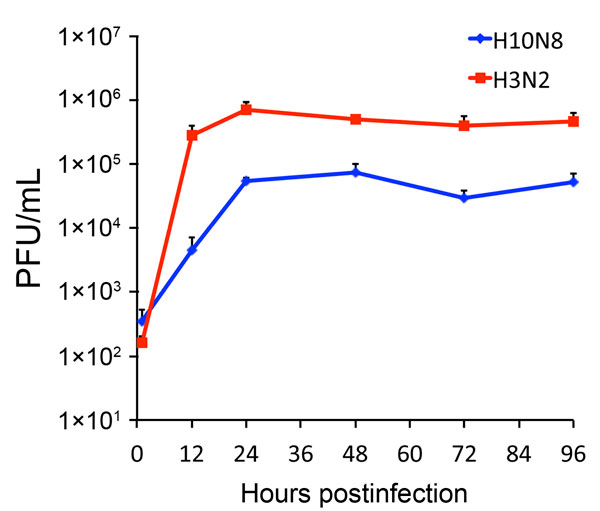Volume 21, Number 7—July 2015
Dispatch
Hemagglutinin Receptor Binding of a Human Isolate of Influenza A(H10N8) Virus
Figure 3

Figure 3. Replication of influenza A(H10N8) H10-JD346 virus in human epithelial cells. A549 cells (a human lung epithelial adenocarcinoma cell line) were infected at a multiplicity of infection of 0.1 with the H10-JD346 virus (6:2 re-assortant with the backbone of PR8) and another 6:2 re-assortant virus expressing hemagglutinin and neuraminidase genes from a human influenza A(H3N2) virus (A/Wyoming/3/2003). Cells were incubated at 37°C in Dulbecco minimal essential medium containing 0.3% bovine albumin (MP Biomedicals, Solon, OH, USA) and 1 μg/mL of tolylsulfonyl phenylalanyl chloromethyl ketone–treated trypsin (Sigma, St. Louis, MO, USA). Supernatants were collected at selected time points, and viral titers on MDCK cells were determined by using a standard plaque assay. H10-JD346 virus showed clearly lower levels of replication that that of H3N2 subtype virus.